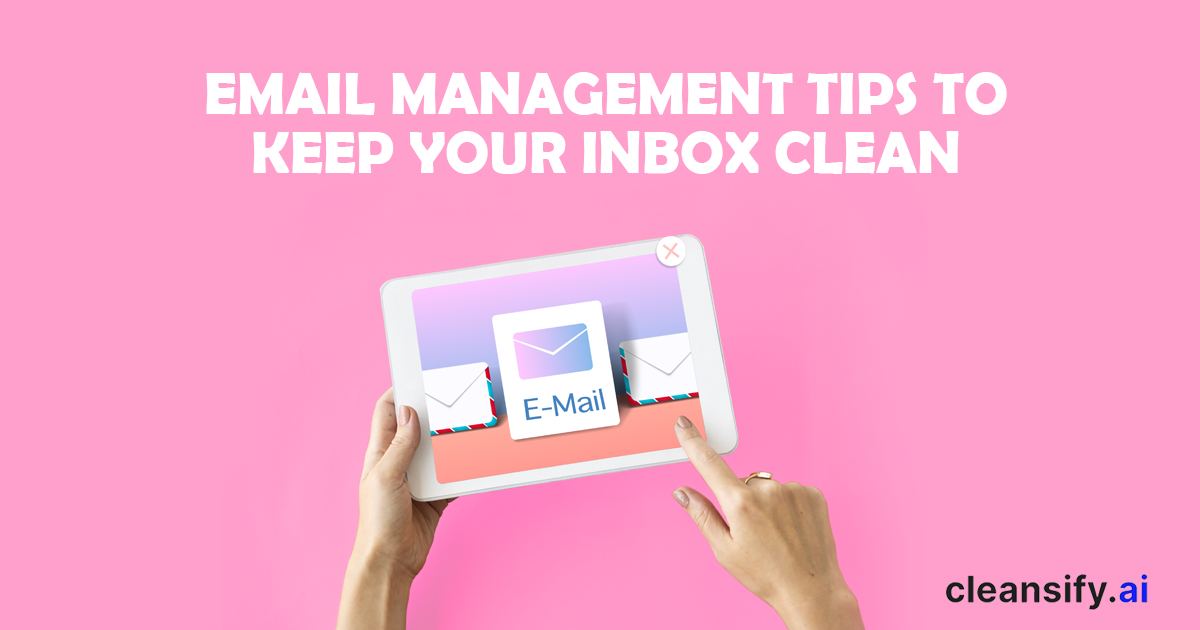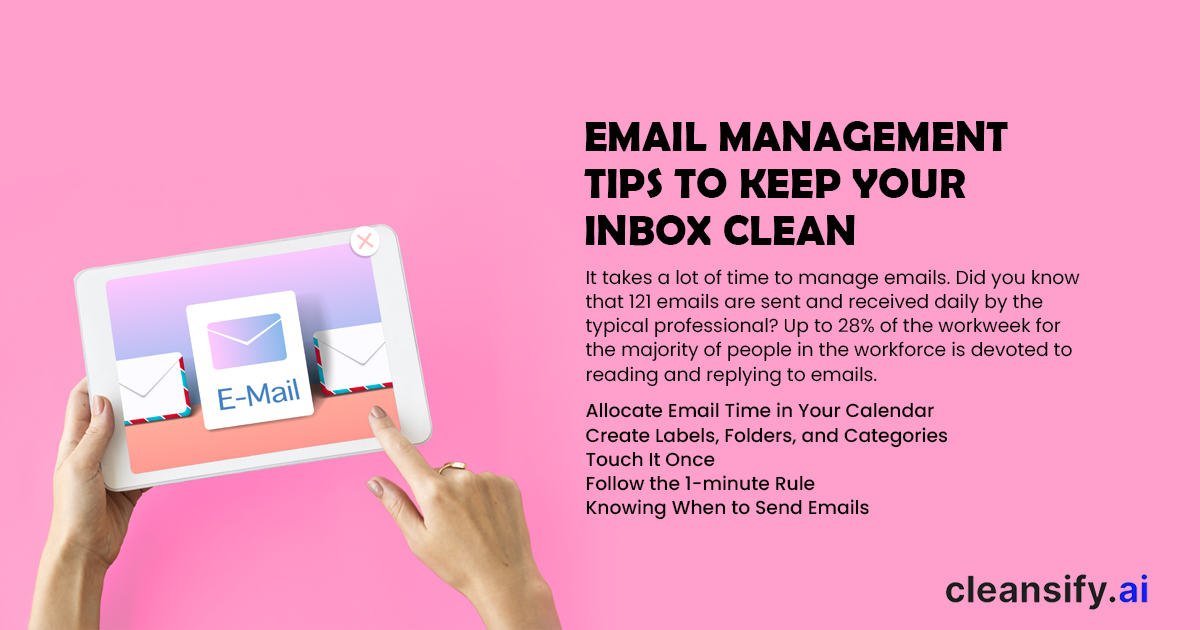Email Management Tips To Keep Your Inbox Clean

It takes a lot of time to manage emails. Did you know that 121 emails are sent and received daily by the typical professional? Up to 28% of the workweek for the majority of people in the workforce is devoted to reading and replying to emails. So it should be no surprise that we are continually inundated with emails, which causes us to work less effectively.
However, things don't have to be this way. Your life will be easier if you can organise and structure how you manage emails. You'll have more time for yourself and be able to create something that has a bigger effect. Let's look at some tried-and-true email management techniques.
Allocate Email Time in Your Calendar
Set up regular times for your emails in your schedule, just as you do for yourself. Schedule. This is crucial since the typical employee checks their email close to 74 times each day! That is a LOT of time, energy, and effort put into something that probably doesn't need that much mental processing power.
However, although not as invasive as a phone call, emails really lead to far higher stress. As working professionals, we frequently worry about them, continually checking our email, and thus lose focus on the things that really important.
That takes us to the most basic tactic, which is to set up a certain period of time each day to deal with email. You might complete this task all at once or set aside time each day only for email. It's best to refrain from multitasking when checking your emails. That's because it's simpler to get everything done when you avoid distractions and maintain focus.
Create Labels, Folders, and Categories
Organization is one strategy for streamlining email administration. Setting up labels, folders, and categories are required. Remember that there is no universal guideline that applies to the development of categories. The answer would entirely depend on the individual, the emails they get, and the best way for them to organise their communications.
For instance, a person in finance would want several files. One for bills, one for payments, and so forth. A marketer could have folders for inbound requests, guest post submissions, advertising, etc. The secret is to categorise, prioritise, and gather emails into groups. The biggest advantage of doing this is that it becomes very simple to find certain emails with only a few clicks.
You may set up parent categories and construct subcategories under them in addition to setting basic folders. For example, with Gmail, go to your inbox and clearly see the left sidebar option to accomplish this. The "manage labels" option may be found under the "categories" menu. Here, select "create a new label." You may think of every label you make as a folder. Give it a name that is suitable and easy to find. You may give your labels other colours in Gmail as well.
Touch It Once
The touch-it-once rule emphasises hasty decision-making while managing emails. The Only Handle It Once (OHIO) approach is another name for it. The point being made here is that repeatedly going back to an email is a waste of time. You thus give it one quick touch, respond to it, save it, and then go on to the next email.
The touch-it-once rule may sound simple, but it can be challenging to implement when it comes to email since we often put off responding to emails.
But since most of us deal with many emails daily, adopting this mentality is crucial. This will prevent you from becoming continually preoccupied with the idea of unanswered emails, which can significantly reduce your productivity.
Follow the 1-minute Rule
You can better manage your time and emails by adhering to the one-minute rule. This means that if responding to an email just requires a minute, do it right away. By doing this, you avoid sitting on emails that can be read, responded to, and stored right immediately. Your inbox will be cleared faster by doing this.
Knowing When to Send Emails
The sort and quantity of emails you send matter just as much as the kind and quantity of emails you receive in terms of email management. There is a proverb that goes, "Send fewer emails if you wish to receive fewer emails."
It would rely on the nature of your work as to whether you should submit them. This is so because certain jobs need employees to spend the majority of their time each day working on emails. For example, those in customer success positions frequently communicate with current customers. Additionally, email is the most common method for doing this. Make careful to maintain clear and concise communication in this type of position. Your group email accounts can be changed to shared inboxes.
The majority of businesses have shared email addresses like info@companyname.com and support@companyname.com. They facilitate communication between outsiders and your brand. However, group emails may become just as bothersome and burdensome as WhatsApp groups.
Such email accounts constantly get new messages, which is made worse by the inability to allocate emails to specific people or keep track of these duties. In order to reduce clutter and ensure that each team member is aware of the email they should be working on, you must be able to arrange processes and simplify emails that arrive in group inboxes.

Conclusion
It's crucial to keep in mind that there is no set method for handling emails, so not every one of these tactics will be effective for you. It could take some trial and error to determine which advice works best for you. If you commit to managing your email in a structured way, your workflow will start to benefit.
Whichever strategy you choose, being consistent is essential if you want to keep your inbox tidy and organised.